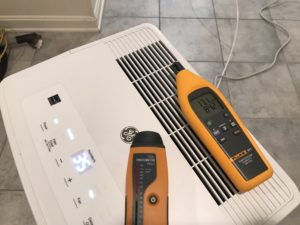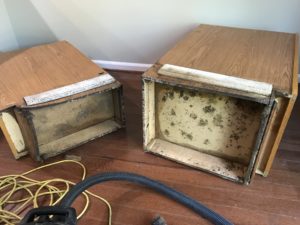REMEDIATION PLAN
Remediation includes both the identification and correction of the conditions that permit mold growth, as well as the steps to safely and effectively treat and/or remove mold damaged materials and their spores that travel in the air throughout the contaminated areas of the building.

The remediation plan should include steps to permanently correct the water or moisture problem. The plan should cover the use of appropriate personal protective equipment (PPE). It also should include steps to carefully treat, contain and/or remove moldy building materials in a manner that will prevent further contamination. Remediation plans may vary greatly depending on the size and complexity of the job, and may require revision if circumstances change or new facts are discovered.
The remediation manager’s highest priority must be to protect the health and safety of the building occupants and remediators. Remediators should avoid exposing themselves and others to mold-laden dusts as they conduct their cleanup activities. Caution should be used to prevent mold and mold spores from being dispersed throughout the air where they can be inhaled by building occupants. In some cases, especially those involving large areas of contamination, the remediation plan may include temporary relocation of some or all of the building occupants.
When deciding if relocating occupants is necessary, consideration should be given to the size and type of mold growth, the type and extent of health effects reported by the occupants, the potential health risks that could be associated with the remediation activity, and the amount of disruption this activity is likely to cause.

In addition, before deciding to relocate occupants, one should also evaluate the remediator’s ability to contain/minimize possible aerosolization of mold spores given their expertise and the physical parameters of the workspace. When possible, remediation activities should be scheduled during off hours when building occupants are less likely to be affected.
REMEDIATION/CLEAN-UP METHODS
The purpose of mold remediation is to correct the moisture problem and to treat and/or remove moldy and contaminated materials (including any spores) to prevent human exposure and further damage to building materials and furnishings. Porous materials that are wet and have mold growing on them may have to be discarded because molds can infiltrate porous substances and grow on or fill in empty spaces or crevices. This mold can be difficult or impossible to remove completely.
As a general rule, simply killing the mold, for example, with biocide is not enough. The mold and any spores must be removed, since the chemicals and proteins, which can cause a reaction in humans, are present even in dormant or dead mold. However, with the special enzyme formula we use, demolition is reduced to a minimum. The mold can often be removed and neutralized without the need for costly demolition.
A variety of cleanup methods are available for remediating damage to building materials and furnishings caused by moisture control problems, mold growth and their spores. The specific method or group of methods used will depend on the protocols of the Remediator, and the type of materials affected, along with any potential health related issues.
It is highly recommended that testing, inspecting and/or remediation for mold contamination should only be performed by experienced and certified Mold Inspectors and/or Remediators.
